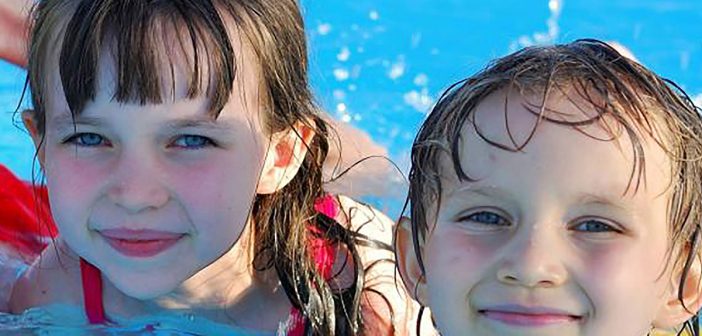When the weather starts to cool, people tend to stop thinking about their backyard and their pool, and so they also stop thinking about pool safety. But the reality is that swimming pools are a place for summertime fun, and year-round danger.
Experts still recommend multiple “layers of protection,” a phrase coined by Life Saver Pool Fence Systems over 25 years ago, to make pools safer for children, with some additional considerations for the winter season.
Here are 5.5 pool safety tips for the winter and fall:
Parent supervision
Nothing beats parent supervision. Proactive parent supervision is your most important tool in drowning prevention. You might not be using the pool this time of year, but studies show that most drownings occur when the child was thought to be in the house, nowhere near the pool area. In southern climates, this is especially true. The refreshing cool outside air makes opening up all the doors and windows more inviting than ever. Unfortunately, doing so may inadvertently grant a child access to the pool, so be careful which doors and windows you choose to open to let in that cool breeze. The winter season is also synonymous with holiday traveling. If you travel this holiday season, either to a relative’s home or away from the cold to a sunny hotel, keep pool safety in mind. Does the place you are traveling to have a pool? How is it protected? You are particularly vulnerable to accidents in unfamiliar locations where you have less control over the environment. In these cases, vigilant supervision is more important than ever, and if your child is ever missing, ALWAYS check the pool first. In 67% of fatal drowning cases, however, a parent was responsible for supervising the child. So, supervision can and does fail, and that’s why you need additional layers of protection.
High locks on all doors and windows
Locks out of the reach of children should be installed, and used, on every door and window that leads to the pool area. Lots of drownings happen because a parent didn’t know that the child had figured out the doorknob, so don’t rely on the door being shut. Also, close up any doggy/pet doors that access the pool. Lots of children who drown got to the pool via a doggy door.
Pool Safety Fence
Pool fencing is the only layer of protection that physically isolates the backyard from the pool. And if you are opening up doors and windows to let that cool fall air into the house, a pool fence might literally be the only physical barrier keeping a child from accessing the pool. In northern climates, many pools have covers installed. Consider keeping the pool fence up in conjunction with the cover. Not only is it an additional layer of protection, but sometimes puddles from rain and other water can form on top of pool covers. A pair of twins fatally drown in a puddle that had formed on top of a pool cover just this year, so keep your pool fence up as an added precaution. Fences should be at least 4′ tall and have a self-closing, self-latching gate. Mesh pool safety fence, like Life Saver Pool Fence, has proven to be an effective layer of protection for over 45 years. It’s very transparent, aesthetically pleasing, and easy to remove when entertaining only adults.
Alarms
Drowning is silent. Alarms break that silence. There are door/window alarms, alarms that sit in the pool, and our favorite, the Safety Turtle which is worn on the child. If you traveling this winter to a place near any type of water — a pool, lake, ocean, or if you have plans to go on a boat, the Safety Turtle is a great option. It has two components: a wristband worn by the child and a base station kept in the house or on the boat. If the wristband goes underwater, the base station lets out a loud, high-pitched alarm, letting you know someone is in trouble. This is a great choice for traveling somewhere unfamiliar where you have less control over the environment.
Swimming Lessons
All children should receive swimming lessons as early as their parents and pediatricians feel comfortable. Swimming lessons can begin earlier than one might think, some organizations training even infants to roll over and float, and to swim to the edge of the pool in the event that they fall in. Swimming lessons usually happen in the summer but are great because the knowledge stays with the child no matter where you go.
CPR Training
And if all of the other layers of protection fail, parents should be trained in CPR. Knowledge of CPR can make the difference between life, permanent disability, and death.





